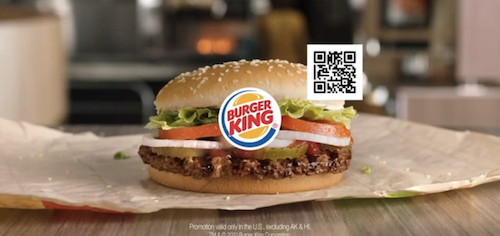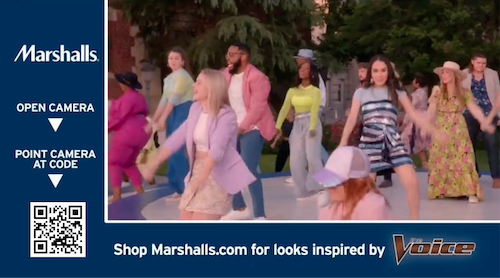It’s no secret the 2020 pandemic changed the way consumers interact with brands IRL and online. When it comes to watching TV, they now have a shorter attention span, making it the new norm to have a mobile device in hand to interact, share, shop, and research what they see on screen. To adapt to this new behavior, “Shoppable TV” with QR codes emerged, allowing brands to instantly engage viewers while watching their favorite TV shows, movies, and commercials.
Consumers from all age groups have become so addicted to technology that one screen is simply not enough any longer. According to Go-Globe, 79% of 18–24-year-olds and 60% of 35–49-year-olds report using a second screen when watching TV. The versatility and applicability of QR codes across different media formats made them the perfect complement to Shoppable TV. Allowing brands to provide the instant gratification consumers seek when using mobile devices.
NBCU proved the effectiveness of integrating QR codes with Shoppable TV, showing conversion rates 30% higher when compared with regular eCommerce visits. Gone are the days when consumers are expected to type long URLs on their phones. Placing a QR code on TV campaigns allows viewers to connect instantly with brands. Using the second screen strategy, brands have seen more than a 72% increase in their website traffic.
QR code placement and design are critical to the success of a campaign. One example of TV commercial placement can be viewed on the Burger King “Scan to win” commercial. A bouncing QR code traveled across the screen while showcasing an image of a delicious Whopper. If viewers scanned the moving QR code, they were instantly notified of winning a free Whopper. The commercial garnered thousands of scans, connecting eager foodies to their free Whopper.

To deliver the best possible shoppable QR Code experience, brands should include the following items in their execution:
All six of these points were well executed in a Marshalls commercial aired earlier this month during The Voice. A QR Code included on the left side of the viewing area connected viewers directly to a special web page at www.marshalls.com , enabling fans to quickly shop contestant outfits that were stylized by Marshalls.

QR codes changed Shoppable TV for the better. Consumer’s win for the convenience, brands win with increased engagement and sales. Keep engaging consumers at each point of their shopping journey! To learn more, contact us at info@scanbuy.com.
Kezzler Expands Industry Leadership with Acquisition of Scanbuy
Neutronian Announces That Scanbuy Has Earned Its Data Quality Certification